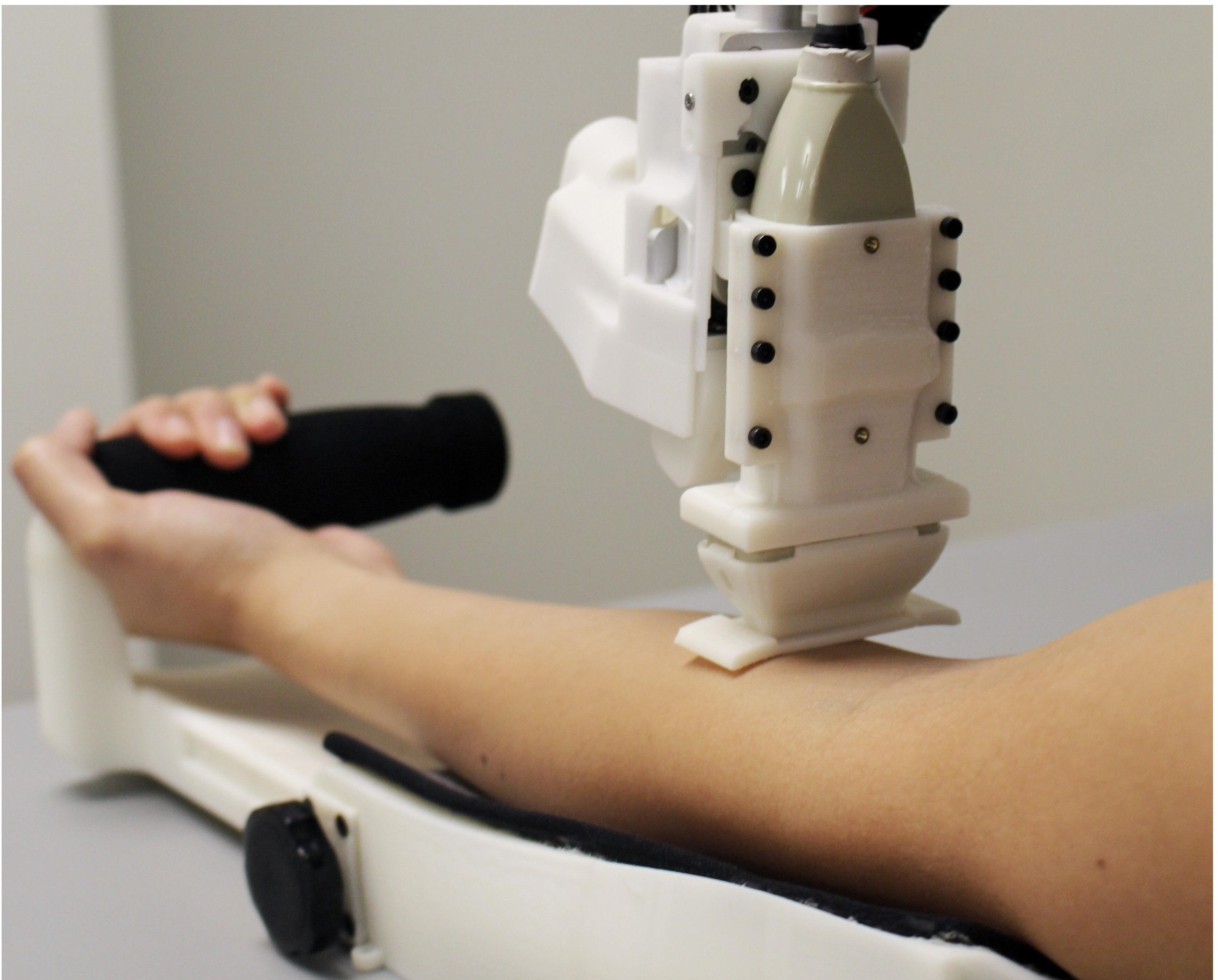Create a free profile to get unlimited access to exclusive videos, sweepstakes, and more!
This robot is after human blood. Don't worry, it's just doing its job.

A highly sophisticated vein-seeker may soon use ultrasound to find and remove human blood. No, this isn't a story about Dracula, Blade villains, or Morbius, The Living Vampire. In fact, it's not really a story about a living thing at all. It's a robot, designed by scientists at Rutgers and a Mount Sinai Hospital researcher...and finding blood is its job.
According to Rutgers, this robot was designed with one thing in mind: venipuncture. Finding a vein and drawing blood from it is the world's most common clinical procedure and sometimes it's a pain in the vein. Some people's blood tunnels are harder to find than others, especially if the patient in question is emaciated. That's why researchers created this white, plasticky robotic device.
The unnamed robot automatically uses ultrasound (the technique of last resort in most cases) to find the best entry point for the needle, then draws the blood. This reduces the chance of wasted time, injured patients and clinicians, and infection from botched needle pokes.
The all-in-one bot also includes a module that handles samples and a centrifuge-based blood analyzer. Citing studies where clinicians fail to draw blood successfully in almost 30 percent of patients without visible veins, 40 percent of patients without palpable veins, and 60 percent of emaciated patients, Rutgers figured it was time to boost the tech. With this blood-sucking device — which should stay clear of Buffy and her ilk — the rates were equal to or surpassed human rates: in a pool of 31 cases, the machine posted a success rate of 87 percent, boosted to 97 percent when the veins were rated "easy to access."
“A device like ours could help clinicians get blood samples quickly, safely and reliably, preventing unnecessary complications and pain in patients from multiple needle insertion attempts,” said the study's lead author, Josh Leipheimer.
The next phase for the machine is to upgrade its AI with data from this study. Teaching a robot better strategies to find human blood might sound a bit scary, but it's just to increase it success rates in drawing blood from people with difficult-to-access veins. That said, it might not hurt to invest in a few JPEGs of garlic just in case that ends up stopping robo-vampires down the line.


























